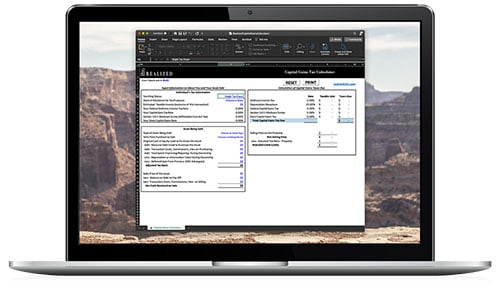
An important part of selling assets involves how much you might gain or lose as a result. Many Realized blogs discuss capital gains (and resulting capital gains taxes) in great detail.
But unless you are an extraordinarily fortunate person, not everything you’ll sell will result in a capital gain. You might actually lose something on the disposition and incur a capital loss. While capital gains end up being taxed, capital losses can be used to offset capital gains or ordinary income.
But the question here is, how much capital loss can you deduct from your income?
Defining Capital Loss
A capital loss occurs when the capital asset you own decreases in value and ends up being sold for a lower price than what you bought it for. This loss is realized when the asset is sold.
The IRS considers everything you own to be a capital asset. But this doesn’t mean that all assets sold at a loss can qualify as a capital loss. But if you generate a capital loss from the sale of personal-use property (think your primary residence or car), this loss isn’t deductible. Instead, this is considered a nondeductible personal expense.
Similar to capital gains, capital losses are either short term (you held your capital asset for one year or less) or long term (you held that asset for more than a year).
This distinction is important, as indicated below.
How it’s Deducted
According to the IRS, the amount of excess loss you can use to lower your income is $3,000 if married, or $1,500 if you’re a single filer. If that capital loss exceeds either $1,500 or $3,000, you can carry over the remainder to offset future tax gains. So, if you sell stock and record a realized capital loss of $10,000, you’d use $3,000 in year one to reduce any capital gain if you’re filing jointly. Then you’d carry over the remaining $7,000 to offset gains in future years.
But you can’t just offset that loss against any old gain or income. If your capital loss follows the sale of a short-term asset hold, that loss must first be applied to any short-term capital gain you generate. Once that’s been applied, the remainder is used to offset long-term capital gains. Only after all of that has been exhausted can you use that short-term capital loss against ordinary income.
Keeping Track
Though using capital loss against gains can be straightforward, doing so requires careful tracking and record-keeping. You need to know your filing status (single or married) and whether your hold was short term or long term. You also need to understand what assets qualify for capital losses.
To avoid confusion or the potential for errors, it’s a good idea to talk to your accounting professional for any assistance when it comes to capital losses.
This material is for general information and educational purposes only. Information is based on data gathered from what we believe are reliable sources. It is not guaranteed as to accuracy, does not purport to be complete and is not intended to be used as a primary basis for investment decisions. It should also not be construed as advice meeting the particular investment needs of any investor.
Hypothetical examples shown are for illustrative purposes only.
Realized does not provide tax or legal advice. This material is not a substitute for seeking the advice of a qualified professional for your individual situation.


